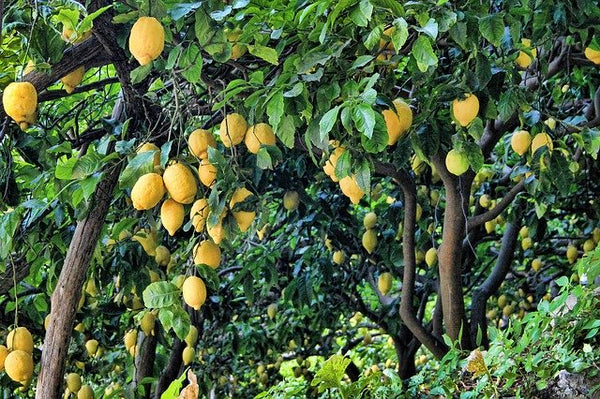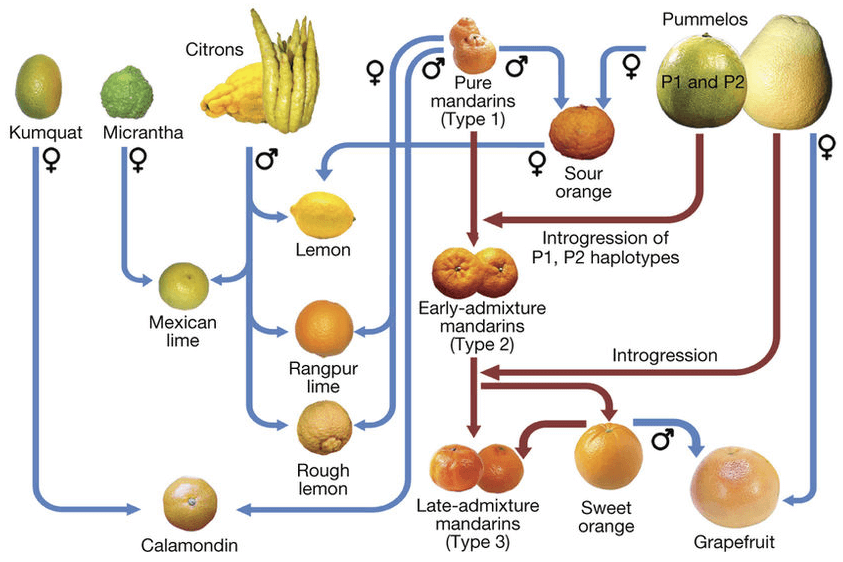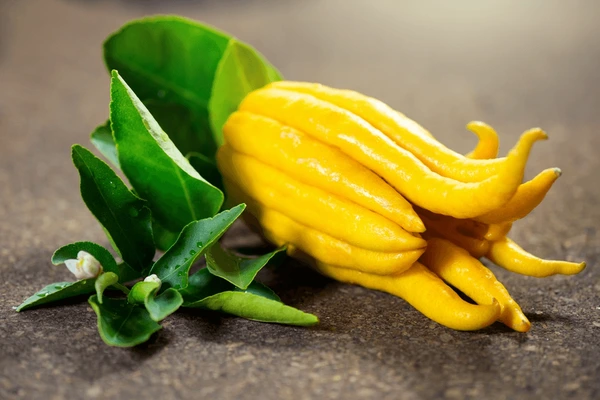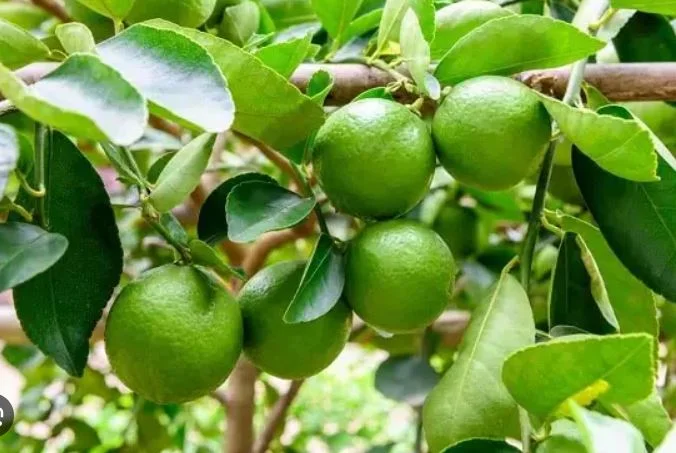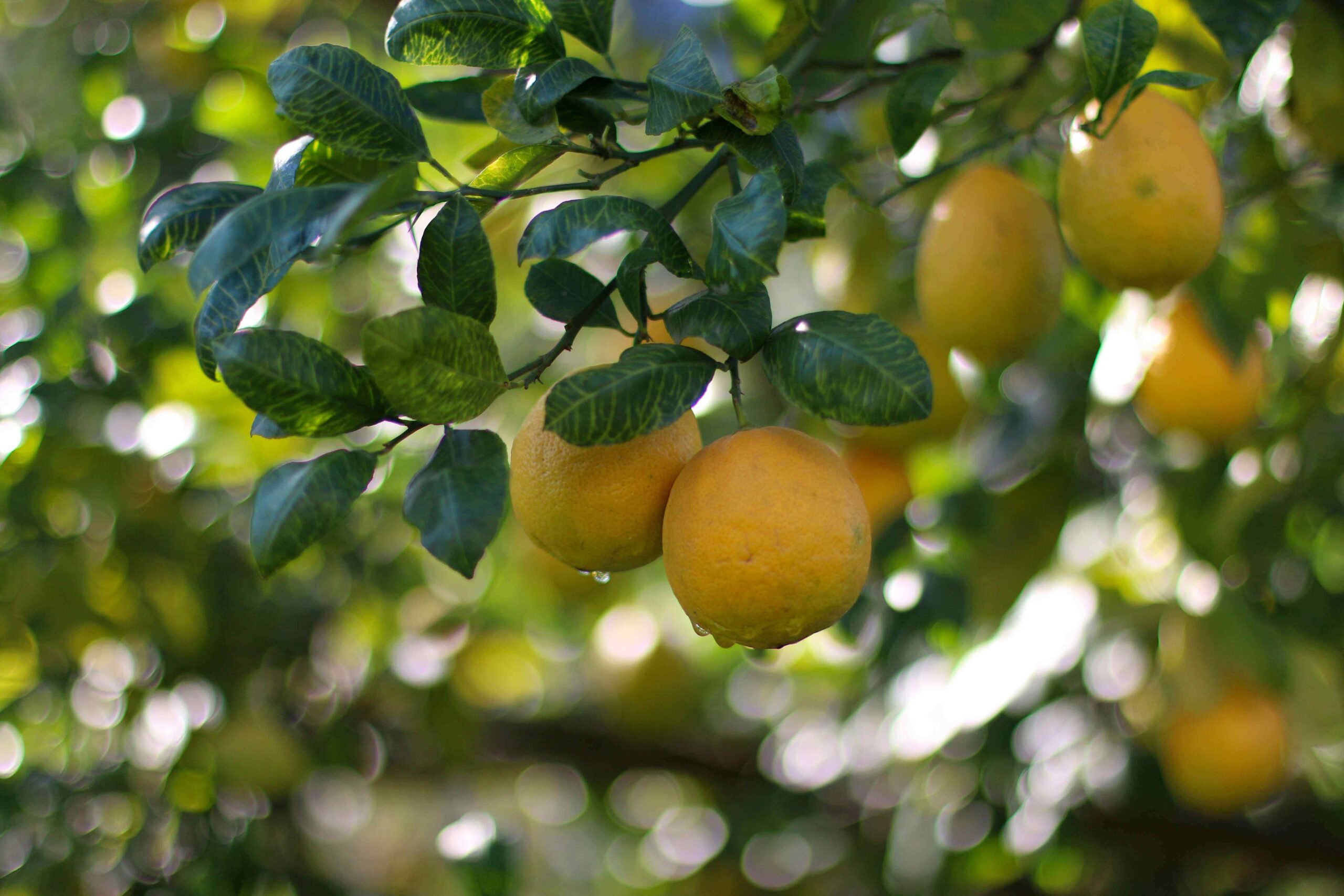
Lemons are one of the most popular fruits in the world, known for their refreshing tartness and versatile culinary uses. From adding a zesty touch to beverages to being a key ingredient in savory dishes and desserts, they hold a prominent place in kitchens across the globe.
But have you ever wondered about the origins of lemons? Are they a product of natural evolution, or are they man-made hybrids?
In this article, we’ll look into the genetic makeup of lemons, their history, and whether or not they can be considered man-made hybrids.
What Are Hybrids In The Plant World?
Before answering whether lemons are hybrids, it's essential to understand what a hybrid is in the world of plants. A hybrid is a cross between two genetically distinct plant species or varieties, resulting in offspring that typically exhibit characteristics from both parents. In nature, hybrids occur when different species pollinate each other, but humans have also played a significant role in the intentional hybridization of plants for specific traits.
Hybrid fruitsoften show improved qualities, such as better flavor, higher yields, and increased resistance to diseases. These hybrids are often cultivated to enhance certain desirable traits, whether it's a sweeter taste, larger fruit size, or longer shelf life. In the case of lemons, the question arises: are they the result of natural cross-pollination, or were they deliberately hybridized by humans?
Lemon Origins - A Brief History
Lemons have a long history that dates back to ancient times. They are believed to have first appeared in Southeast Asia, in the area that includes parts of India, Burma (Myanmar), and China. From there, the fruit slowly made its way to other parts of the world. Around the 1st century AD, lemons were introduced to the Mediterranean region, mostly through trade and early explorations.
The history of lemons, however, isn't as simple as just being a naturally growing fruit. Researchers and historians have spent a lot of time studying where lemons came from, and they don’t all agree on their exact origins. The most common theory is that lemons weren’t an entirely natural fruit in the beginning. Instead, they might have come from a series of natural crossbreeding events between different citrus fruits. Over time, these hybridized fruits eventually developed into the lemons we recognize today.
This means that lemons might not have been the result of just one species of fruit, but rather a mix of different citrus plants, which slowly evolved into the familiar fruit. This idea has been supported by genetic studies showing that lemons likely originated from a combination of the citron (a large, rough-skinned fruit) and the lime, both of which were cultivated in ancient times.
Citrus Family
The Citrus familybelongs to the Rutaceae family and is known for its juicy, tangy fruits rich in vitamin C. Common fruits in this family include lemons, oranges, grapefruits, limes, and tangerines. These fruits are typically cultivated in tropical and subtropical climates and are popular worldwide for their refreshing taste, aromatic zest, and nutritional benefits.
1. Rutaceae Family
The Rutaceae familyis a diverse family of flowering plants, commonly known as the rue or citrus family. This family includes a wide range of aromatic plants and fruits, both tropical and temperate. In addition to citrus fruits, it also contains other popular fruit plants such as the finger lime, citron, and calamondin. Plants in this family are known for their aromatic oils, which are often used in perfumes, cleaning products, and essential oils. The family also includes ornamental species like the Australian wattles and rue plants.
2. Berry Family (Solanaceae)
The Berry family, also known as the Solanaceae family, is one of the largest and most diverse plant families. While not directly related to citrus fruits, it includes important fruits such as tomatoes, potatoes, and peppers, as well as a variety of berry-like fruits like eggplant. These fruits and vegetables share common characteristics, including a fleshy pericarp, and some members of this family, like tomatoes, are technically classified as berries in botanical terms. Many of these fruits are cultivated for both culinary and medicinal uses.
3. Rose Family (Rosaceae)
The Rose family, or Rosaceae, is a large family of plants that includes many popular fruits such as apples, strawberries, cherries, raspberries, and pears. These fruits are typically sweet, juicy, and often eaten fresh or used in desserts, jams, and beverages. The rose family is also known for its ornamental plants, particularly roses, and other flowering shrubs. These fruits are rich in vitamins, antioxidants, and fiber, making them a nutritious choice for a balanced diet.
4. Mallow Family (Malvaceae)
The Mallow family(Malvaceae) is a diverse family of plants that includes fruits like hibiscus and okra. While most members of the Mallow family aren't as widely known for their fruit as the citrus or rose families, plants like hibiscus produce large, vibrant flowers, and their fruit is sometimes used in beverages (like hibiscus tea). The family also includes the well-known vegetable, okra, used in many cuisines, particularly in southern and Creole cooking. Some members of this family are also important in traditional medicine for their soothing and anti-inflammatory properties.
5. Grape Family (Vitaceae)
The Grape family(Vitaceae) is primarily known for its grapevines, which produce the famous grapes used for fresh eating, juicing, and wine production. While grapes are the most notable fruit in this family, it also includes other climbing plants, some of which are used for ornamental purposes. Grapes, particularly varieties like Concord, Thompson Seedless, and Cabernet Sauvignon, are a rich source of antioxidants like resveratrol, which is thought to have heart-health benefits.
6. Mulberry Family (Moraceae)
The Mulberry family(Moraceae) includes a wide variety of trees and shrubs that produce fruits like mulberries and figs. Mulberries are small, sweet fruits that grow on trees in clusters and are commonly eaten fresh, dried, or made into jams. Figs, another member of the Moraceae family, are also valued for their sweetness and are often eaten dried or used in baking and cooking. Both fruits are high in fiber and contain beneficial antioxidants, making them a healthy addition to the diet.
7. Cashew Family (Anacardiaceae)
The Cashew family(Anacardiaceae) includes the well-known cashew tree, which produces the cashew nut, and the cashew apple, a fruit that is used to make juice in many tropical regions. This family also includes other notable fruits like mangoes, pistachios, and poison ivy. The cashew apple is an important food source in some parts of the world, particularly in tropical climates. Cashews and pistachios are popular nuts that offer a rich source of protein, healthy fats, and minerals.
How Lemons Got Their Name
Lemons were first called lemons around the late 1400s. The word is based on the Old French word, limon, suggesting lemons came to England via France. Limonderives from the Italian word limone, which drew its inspiration from the Arabic word laymūnand the Persian word limun.
Lemon Nutrition
Lemons are packed with vitamin C. In the past, sailors and explorers would take lemons and other citrus fruits like oranges and grapefruits on long journeys to avoid getting scurvy, a disease caused by a lack of vitamin C.
Lemons also contain a good amount of potassium. While not as much as bananas, lemon juice provides about one-third of the potassium found in bananas. For every 100g of lemon, there’s 103mg of potassium, compared to 358mg in 100g of bananas.
Eating Lemons
At first, lemons weren’t grown for eating. They were more of a decorative fruit, like tomatoes. But by the 15th century, lemons became popular in cooking, and farmers started planting large numbers of lemon trees around Genoa, Italy. Thankfully, they did, because lemons have so many uses today.
Lemon juice is used in everything from drinks to marinades. The peel can be turned into spices like lemon pepper, and lemon oil is used in perfumes, cleaning products, and more. Even the leaves can be used to make tea. And of course, lemons make great garnishes for all kinds of dishes.
The Genetic Makeup Of Lemons
Modern lemons, scientifically known as Citrus limon, exhibit traits from different species within the Citrusgenus. Genetic studies and analysis have revealed that lemons are indeed hybrids, and their origin is a result of cross-pollination between two different citrus species: the citron (Citrus medica) and the bitter orange (Citrus aurantium).
- Citron: This large, yellow citrus fruit is thought to be one of the progenitors of lemons. While citron itself is not very juicy, it is highly fragrant and has a thick rind, which could have contributed to the lemon's distinct aroma and peel.
- Bitter Orange: Another essential parent of the lemon, bitter orange is a hybrid itself, often used for its strong, tangy flavor. It’s known for its aromatic qualities, and its combination with citron produced the more familiar lemon fruit.
The hybridization likely took place many centuries ago, and lemons became more distinct as humans selectively bred them for their juiciness, tartness, and overall utility in cooking.
Are Lemons Man-Made Hybrids?
Now that we understand the genetic makeup of lemons, let’s address the core question: Are lemons man-made hybrids?
The answer is somewhat nuanced. Lemons are not entirely a product of human intervention, but they have been heavily shaped by human cultivation over the centuries. They most likely originated as a natural hybrid between citron and bitter orange, with these cross-pollinations occurring over time in nature. However, once lemons were discovered, humans played a crucial role in their propagation and selective breeding.
- Natural Hybridization: The initial hybridization of citron and bitter orange occurred without human intervention, likely through natural cross-pollination.
- Human Influence: After the lemon’s initial emergence, humans began cultivating them for specific traits, such as their tangy flavor and high juice content. Over time, humans selectively propagated lemons with desirable characteristics, essentially refining the fruit we know today.
Therefore, while lemons may have started as a naturally occurring hybrid, human influence in the cultivation and breeding process has certainly shaped the fruit over time. In that sense, they can be considered "man-made" hybrids in the sense that humans have curated and perfected them through selective breeding.
Common Hybrid Fruits And How They Relate To Lemons
Lemons aren’t the only hybrid fruits to make an impact on modern agriculture. Hybrid fruits are common in the world of horticulture, and many of them have been developed for specific qualities such as taste, disease resistance, or ease of cultivation. Here are some common hybrid fruits that share similarities with lemons:
- Tangelo: A hybrid between a tangerine and a pomelo or grapefruit. Known for its sweet, tangy flavor, tangelos are a result of hybridization similar to lemons.
- Pluot: A cross between a plum and an apricot. The pluot’s improved sweetness and flavor are a result of hybridization, much like the way lemons were cultivated for their tartness.
- Limequat: A cross between a lime and a kumquat. Limequats exhibit the tangy flavor of limes with a slight sweetness, showing how citrus hybrids can produce new flavors.
These fruits, much like lemons, are products of nature’s cross-pollination as well as human intervention, specifically bred to improve desirable traits.
The Role Of Humans In Lemon Cultivation And Evolution
While lemons were initially the result of natural hybridization, humans have played a major role in shaping the varieties we see today. Over the centuries, lemon cultivation was spread from the Mediterranean to the rest of the world, with a variety of lemon types emerging in different regions. In addition to simply cultivating lemons, humans have also focused on breeding new varieties to meet market demands.
For example, varieties like the Eureka lemon and the Lisbon lemon have been cultivated for their specific characteristics such as their smooth skin, larger fruit size, and consistent fruiting. Fresh lemon juicehas also become a popular product, thanks to its tangy flavor and versatile uses in cooking, beverages, and even as a natural remedy. More recently, genetic modification and research have allowed breeders to develop lemons that are more disease-resistant, frost-tolerant, and more easily transported.
What Does This Mean For The Future Of Lemons?
As our understanding of genetics and horticulture improves, there is the potential for even more innovations in lemon cultivation. Hybridization continues to play a significant role in modern agriculture, and with advancements in genetic research, we may soon see even more types of lemons developed to suit specific climates or farming needs. Some of these new varieties could even be known as the sweetest fruitin the citrus family, appealing to those who prefer a milder, less tart flavor.
One area that could see changes is the development of lemons with improved resistance to pests and diseases, ensuring that this beloved fruit continues to thrive in the face of global challenges. Additionally, the growing popularity of hybrid citrus fruits may lead to the creation of entirely new varieties, offering consumers even more options when it comes to citrus-based products.
FAQs
What Is The Difference Between Hybrid And Non-hybrid Fruits?
Hybrid fruits are a result of cross-pollination between two different species or varieties, while non-hybrid fruits are naturally occurring species. Hybrids often exhibit enhanced qualities such as improved taste, size, or disease resistance.
Are Lemons Genetically Modified?
No, lemons are not genetically modified. However, they are a hybrid fruit resulting from natural cross-pollination between citron and bitter orange, and their development has been influenced by human cultivation over time.
How Do You Know If A Lemon Is A Hybrid?
Most modern lemons are hybrids of citron and bitter orange. However, it’s not always easy to visually distinguish a hybrid lemon. The genetic origin is typically traced through botanical and genetic studies rather than visual characteristics.
Can Hybrid Lemons Produce Seeds?
Yes, hybrid lemons can produce seeds, although the seeds may be less frequent in some varieties. Seedless varieties of lemons, such as the Eureka lemon, are also popular in cultivation.
Why Are Lemons So Popular In Hybridization?
Lemons are popular in hybridization because of their versatile uses in cooking, beverages, and even cosmetics. Hybridization allows for lemons with improved characteristics such as better flavor, disease resistance, and adaptability to different climates.
Conclusion
In conclusion, lemons are indeed the product of natural hybridization between citron and bitter orange, and their evolution has been heavily influenced by human intervention.
While not entirely man-made, they have been shaped by human cultivation for centuries, resulting in the juicy, tart fruit we use today.
Understanding the hybrid origins of lemons gives us a deeper appreciation for their history and their role in modern agriculture, where hybrid fruits continue to thrive and evolve.
